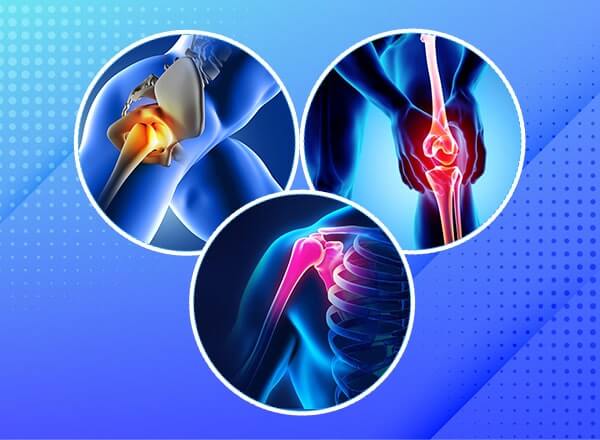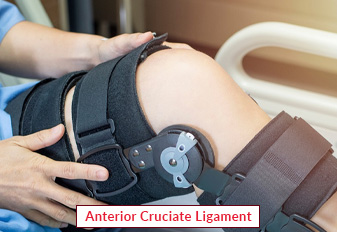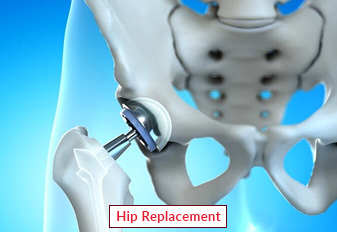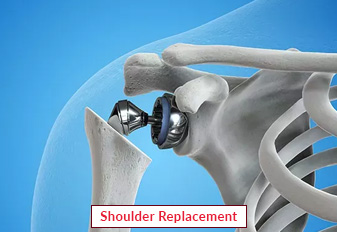Joint Replacement Surgery

Joint replacement surgery is a procedure in which a surgeon removes a damaged joint and replaces it with a new, artificial part. A joint is where two or more bones come together, like the knee, hip, and shoulder. Total joint replacement is a surgical procedure in which parts of an arthritic or damaged joint are removed and replaced with a metal, plastic, or ceramic device called a prosthesis. The prosthesis is designed to replicate the movement of a normal, healthy joint.
The risks of joint surgery will depend on your overall health and the health of your joints before surgery, and the type of surgery done. Recovery and rehabilitation will be different for each person.
Book an AppointmentAbout Joint Replacement Surgery
Joint replacement surgery, also known as arthroplasty, is a medical procedure aimed at alleviating severe joint pain and improving the mobility and quality of life for individuals suffering from conditions like arthritis, injury, or degenerative joint diseases. During the surgery, the damaged or worn-out joint is replaced with a prosthesis made of metal, plastic, or ceramic components, tailored to mimic the natural joint's function.
Benefits of Joint Replacement Surgery
Joint replacement surgery offers numerous benefits for individuals with debilitating joint pain and limited mobility, often caused by conditions like osteoarthritis or rheumatoid arthritis.
Here are six key benefits of joint replacement surgery:
- Pain Relief: The most immediate and significant benefit of joint replacement is the relief from chronic joint pain. It can eliminate discomfort and inflammation, allowing individuals to return to an active and pain-free lifestyle.
- Improved Mobility: Joint pain can severely restrict mobility, making everyday tasks like walking, climbing stairs, or bending painful and difficult. Joint replacement restores proper joint function, providing greater ease of movement and enhanced overall mobility.
- Enhanced Quality of Life: With pain and mobility issues resolved, patients experience a substantial improvement in their overall quality of life. They can once again engage in activities they may have given up due to joint pain, leading to increased independence and a more fulfilling life.
- Reduced Medication Dependency: Many individuals with severe joint pain rely on pain medications to manage their discomfort. Joint replacement can significantly reduce or even eliminate the need for these medications, sparing patients from potential side effects and addiction issues associated with long-term medication use.
- Longevity and Durability: While joint replacements are not permanent, modern artificial joint components are designed to last for many years. Patients often experience 15-20 years or more of use from their joint implants. Younger patients may require revisions, but these procedures have become more effective and less invasive over time.
- Improved Mental Health: The relief from chronic pain can positively impact an individual's mental and emotional well-being. Patients often report reduced stress, anxiety, and depression following joint replacement, as they can lead more active and fulfilling lives.
Procedure of Joint Replacement Surgery
The injured joint is removed by the surgeon through incisions made during the procedure. After that, a prosthetic joint is used in its place. To seal the incisions, they employ surgical glue, staples, or stitches. A bandage is applied to the joint by your provider.
Certain joint replacement treatments can be performed by surgeons utilizing minimally invasive methods. These methods require less special tools and incisions. Compared to typical operations, less invasive techniques may require less recovery time.
Depending on the type of procedure you had, you could be able to go home the same day as the operation or you might need to stay in the hospital for one or two days. Following surgery, physical therapy and rehabilitation are continued to promote healing and strengthen the new joint. Follow-up appointments are planned regularly to monitor the healing process and handle any issues that may arise.
Your joint's damaged bone and cartilage are removed during surgery, and prosthetic parts composed of ceramic, plastic, or metal are implanted in their place. The prosthesis resembles a natural joint in both form and function. For instance, a plastic socket is implanted into the pelvis to replace the damaged socket in an arthritic hip, and the damaged ball (the upper end of the femur) is replaced with a metal ball attached to a metal stem that is inserted into the femur.
Require Assistance?
Get A Quick Callback From Our Healthcare Experts
Other Specilities We Cover

Anterior Cruciate Ligament (ACL)

Hip Replacement




